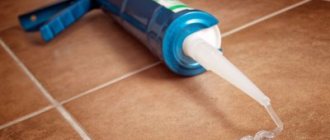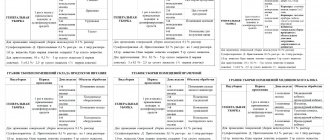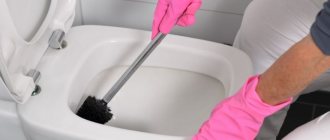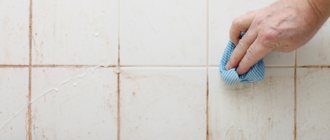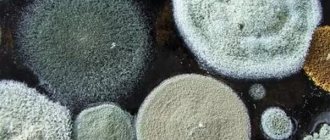The best way to protect yourself and your family from diseases caused by fungi and bacteria is timely and regular cleaning of premises. Cleaning and disinfection of bathrooms is especially important, because dampness and warmth are the main conditions for the development of pathogens. Cleaning the bathroom is a very labor-intensive process, but it can still be made easier by choosing the right cleaning products and equipment. According to the recommendations of experts, it is necessary to clean at least once a week, and carry out general cleaning with complete disinfection of surfaces - at least once a month. It is convenient to distribute the cleaning process into daily, weekly and monthly. However, each housewife develops a schedule independently, based on her capabilities.
Spring cleaning: 15 things in the bathroom that we forget to clean
Cleaning the bathroom is a part of housework that we often ignore. It's probably happened when you moved the cleanser away from your eyes, missing several days, or even a week. After all, there are always more important things to do. But a large number of microbes accumulate on the sink, bathtub and other surfaces, whose secretions can negatively affect our health.
Therefore, cleaning the bathroom and toilet rooms is mandatory. No matter how busy you are, try to do quality cleaning at least once a week. Remember: everyone who enters a bathroom or restroom leaves behind their own unique germs, which instantly end up on toothbrushes, soap, towels and other personal hygiene items. Agree, this is not a very pleasant situation. And even though microbiologists Philippe Tierno and Charles Gerba stated that “our body has a natural immunity that can cope with any microorganism,” maintaining good hygiene is strictly necessary.
Since we can't live in an antibacterial bubble, all we can do to reduce our chances of getting sick is washing our hands frequently and cleaning our home spaces. To save you another headache, we've put together a handy schedule to help you keep your bathroom clean.
Bath/shower curtain
- clean once a week / change the curtain every 3 months
We have all heard more than once about staphylococcus, which actively multiplies upon contact with contaminated surfaces. So, if you don't clean your bathtub weekly, biofilm can form on its walls. Remember to clean your bathtub or shower at least once a week. And for better surface cleaning, use a mechanical brush paired with bleach - the best cleaning agent for bathtubs and sinks.
As for the shower curtain, it is better to change this attribute every 3 months, since due to excess moisture in the room, mold and lime soap can form on the fabric. Mold, in turn, can cause allergies. So if you notice bouts of sneezing or headaches that are not related to illness, pay attention to your bathroom curtain.
Cleaning Rules
Basic cleaning rules include daily care. After each bath, the tiles should be wiped with a dry cloth; steam makes the surface damp, which contributes to the appearance of limescale and soap stains.
The correct selection of brushes and sponges for washing is also important; it is worth choosing equipment made of soft materials in order to avoid damage to the top layer of the tile. You need to select equipment depending on the coating of the tiles used, as well as the type and strength of dirt. This also includes the correct choice of cleaning products.
Bath mat
- clean once a week and change every 3 months
Usually you get out of the shower and step on the mat. That is why it is considered a high-traffic area, especially when several people use the bathroom. Just like bathroom curtains, rugs need to be replaced every 3 months and washed every week.
Since most specialty flooring materials are typically quite thick and rubberized, it is important to ensure that they are completely dry after use. According to microbiologist Philippe Tierno, “complete drying kills microorganisms and prevents their reproduction and growth.”
Features of removing various types of contaminants
To understand how and with what to clean the tiles, you need to understand how they are contaminated and what caused it. The main types include construction pollution, which remains after repairs, and household pollution, which appears during operation. Based on this, you need to choose cleaning methods and equipment.
Household
Household stains include limescale, soap stains, condensation on walls and floors, mold, etc. Plaque forms in rooms with high humidity, for example, in the bathroom. Water contains a solution of various salts; after evaporation, it settles on the tile surfaces and leaves deposits.
Over time, plaque forms; the higher the water hardness, the faster it forms. The best way to combat it is to ventilate the room and wipe the tiles dry after each shower. Soap stains and condensation can be removed by simply wiping with a clean, dry cloth or soft sponge.
There are different ways to remove mold or mildew. You can treat it with a steam cleaner, walk well with steam in places where mold accumulates and appears on the surface, and wipe with a soft sponge. You can also use various chemicals such as ammonia, hydrogen peroxide, copper sulfate.
Construction
Construction materials include tile adhesive, grout, polyurethane foam, sealant, and construction dust. The most harmless of contaminants is construction dust; its appearance is fascinating during any construction work. After repair it must be removed.
It is recommended to carefully sweep away all dust with a dry rag or use a vacuum cleaner. Use a razor blade to scrape off the hardened tile adhesive. After this, begin washing the tiles with a soft sponge dipped in soapy water.
It is not advisable to scrape the glue or sealant, as this can damage the surface of the tile. For this purpose, it is good to use a product to clean the gun from polyurethane foam. It dissolves glue well and the surface can only be wiped with a dry cloth.
Toilet
- clean once a week
Better sit down before you hear this.
But, according to Charles Gerb, "there is usually more excrement (bacteria, of course) on a kitchen cutting board than on a toilet seat." You may want to clean your board as soon as possible. But we have a little consolation for you: if you clean your toilet at least once a week, then there is nothing to worry about. Nevertheless, microbiologist Gerba advises cleaning the “white friend” much more often if someone in the family is sick. see also
37 Unusual Ways to Use Coca-Cola
Sink/faucet and handles
- clean once a week/clean every day
Paradoxically, the place where you clean your hands of dirt and bacteria is not itself clean. And if you can wash the sink with detergents at least once a week, then the faucet and its handles should be cleaned much more often, especially if you have children. The truth is simple: the more people touch their hands, the more favorable the environment for the growth of microbes becomes. And what they leave on the surface can have a detrimental effect on the health of your family members.
Towels
- wash every 3-4 days
How often do you change your towels? Most likely, not as often as required by hygiene rules. It's no secret that towels are a breeding ground for bacteria, especially if they are not dried and washed properly. The situation is more complicated if you have a combined bathroom.
Try not to place wet towels close to the toilet. Otherwise, according to Charles Gerba, you risk getting more bacterial excrement on your face by drying yourself with such a towel than if you simply stuck your head in the toilet.
What toilet cleaning products are best to use?
In principle, any antimicrobial agent can be used to clean the toilet. As a rule, such products are based on chlorine, with all kinds of flavors and fragrances.
To clean the toilet, you can easily buy a product like “Duckling”, “Sanita”, etc.
You can use products made in both gel and spray form. It is quite possible to combine such means. For example, we use a gel to treat the inner rims of the toilet, as well as places near the drain, and a spray to treat the seats and outer walls of the toilet, on which it is easier and more effective to spray a cleaning product.
Toothbrush/brush cup
- change every 3 months/clean once a week
If you are not yet impressed by the information received, then read about toothbrushes. We have already talked about the possibility that splashes of water from the toilet may fall on towels hanging nearby. A similar situation can occur with a toothbrush, so in a shared bathroom, keep the hygiene item away from the “latrine”, preferably in a cabinet. But do not forget to provide them with enough air, because you remember that a wet environment is the best friend of microbes.
see also
A few tips on how to unclog a drain with your own hands
It's easy to remove limescale
Due to the constant contact of the tile with water, limescale gradually appears on it, and subsequently increases. It is quite difficult to clean it the first time, so you need to immediately tune in to a long and labor-intensive process.
Various powder products are sold in stores, but their use on glossy tiles is undesirable. Using powders or hard brushes can leave micro-scratches on the enamel coating of the tile. It is better to use gel or liquid products.
Mirror and cabinet
- clean once a week
You can finally breathe out! Of all the places in your bathroom, the mirror and wall cabinet are the ones that you don't really need to worry about and clean daily. But this does not mean that you should ignore them, especially if several people use the bathroom. Keep the surface of the mirror and cabinet clean to avoid heavy contamination.
Switches and door handles
- clean once a day
More often than not, we don't wash these items at all. But just think about how many times and how many people touch light switches and door handles every day. The situation is especially aggravated when a large family lives in the house. To prevent the growth of bacteria and get rid of their secretions, wipe the areas daily, ideally using disinfectants.
Original article: How Often Should I Clean These 15 Things In My Bathroom?
Photo: Buzzfeed
How to remove mold?
To prevent mold from appearing on the seams, use a two-component grout. However, if mold has already appeared, then you can get rid of it by treating the areas where it appears with ammonia, hydrogen peroxide or tea tree oil. It is not recommended to use peroxide on colored tiles; it can lead to discoloration. It is better to use ammonia in a respirator, and after treatment the bathroom should be thoroughly ventilated. Tea tree essential oil must be dissolved in water in a ratio of 1 to 50 and applied to the problem area.
Products containing chlorine work well against fungi and mold. It is also better to work with them using personal protective equipment and ventilate the room after using them. Or purchase antifungal drugs in a specialized store. These products are developed using a special formula that kills the fungus and prevents its appearance.


